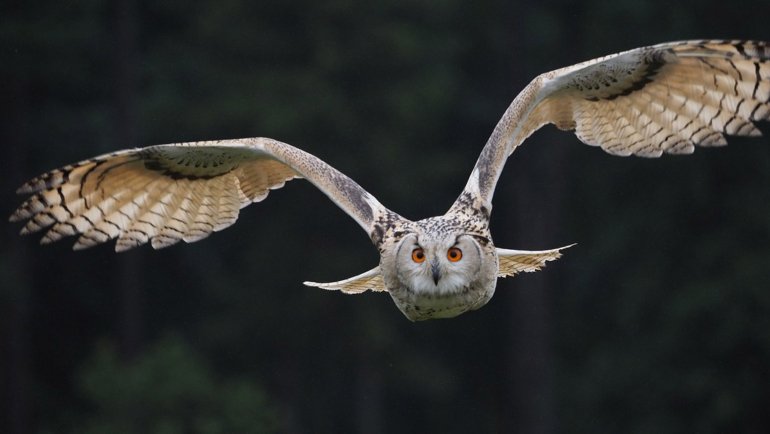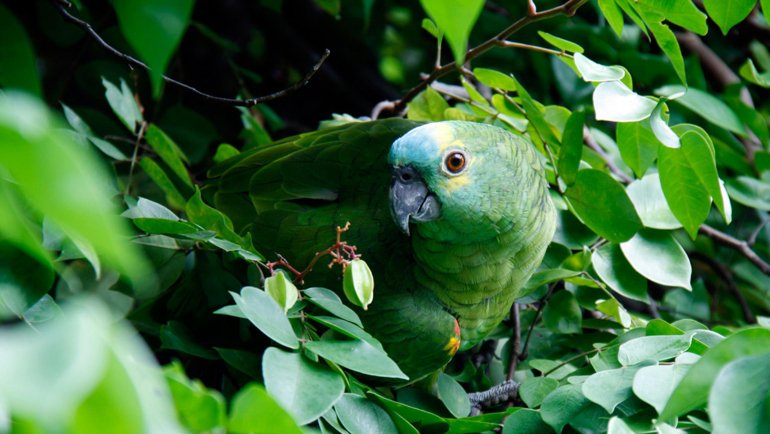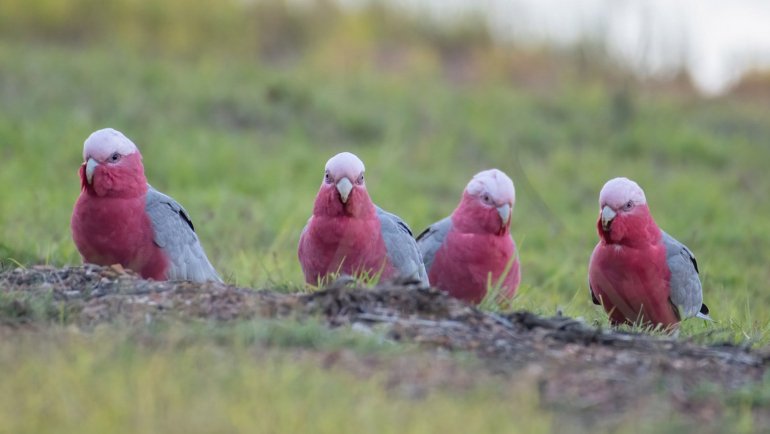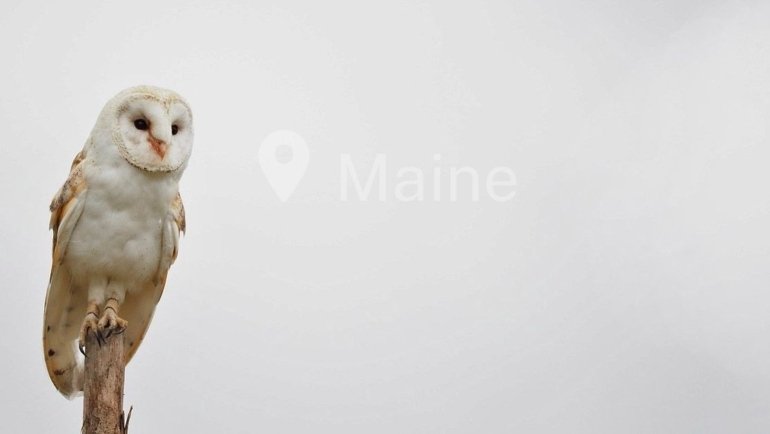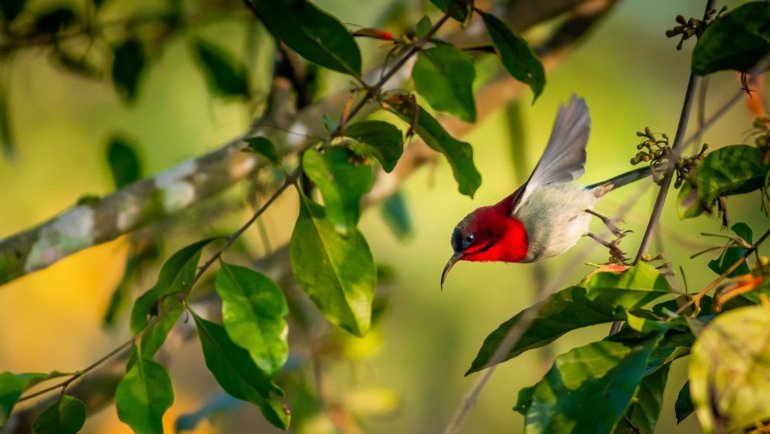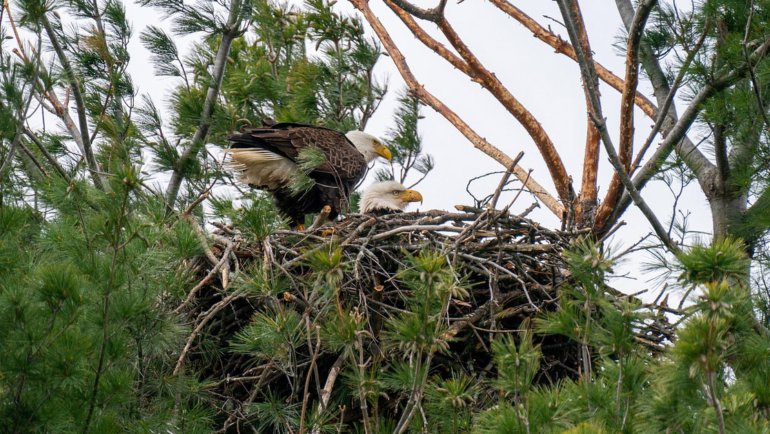Nestled in the heart of the Rocky Mountains, Montana is home to a myriad of unique wildlife, and that includes a variety of owl species.
This state’s vast landscapes, ranging from prairies to mountainous terrains and extensive woodlands, provide suitable habitats for these spectacular birds of prey.
In this guide, we will explore the different owl species found in Montana, their characteristics, habitats, and tips for spotting them.
Owl Species Found in Montana
Barn Owl
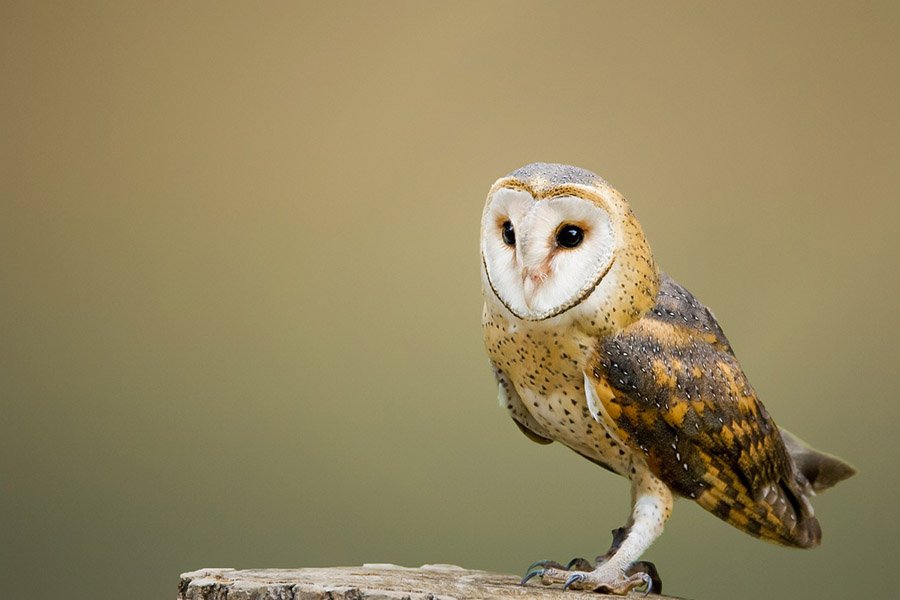
- Scientific Name: Tyto alba
- Size: 33-40 cm (13-15.8 in)
- Weight: 430-620 g (0.94-1.4 lb)
- Wingspan: 80-95 cm (31.5-37.4 in)
- Time of the Year: Year-round
The Barn Owl, with its distinctive heart-shaped face and strikingly pale plumage, is a year-round resident of Montana. Though it is one of the most widespread birds in the world, the Barn Owl is somewhat elusive and prefers open grasslands, marshes, agricultural fields, and of course, barns and other old buildings.
It’s a nocturnal creature that hunts small mammals, especially voles, in the dead of night, utilizing its exceptional hearing facilitated by its disk-shaped face that directs sound to its ears. Barn Owls do not hoot like other owls. Instead, they emit a high-pitched screech, which can be quite startling in the still of the night.
Their nesting habits are as flexible as their diet; they are known to nest in trees, caves, and even human-made structures. If you venture out into the open country of Montana under the cover of darkness, you may just catch a glimpse of a Barn Owl in action.
Did you know? The Barn Owl doesn’t hoot like most owl species. Instead, it makes a screeching sound, which has earned it nicknames such as “screech owl” and “demon owl.”
Boreal Owl
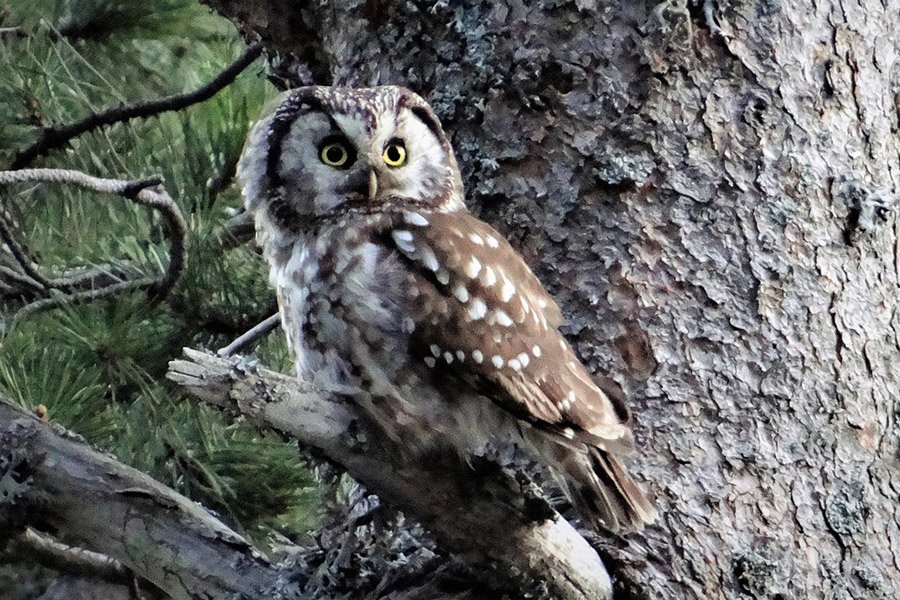
- Scientific Name: Aegolius funereus
- Size: 22-27 cm (8.7-10.6 in)
- Weight: 100-170 g (3.5-6 oz)
- Wingspan: 55-62 cm (21.6-24.4 in)
- Time of the Year: Year-round
The Boreal Owl, also known as Tengmalm’s owl, is a small but feisty owl that calls the vast forests of Montana home all year long. These birds prefer the cool, dense, coniferous forests found in the mountainous regions of the state, and they are quite adaptable, often nesting in tree cavities or utilizing the old nests of other birds.
Boreal Owls are predominantly nocturnal, hunting for small mammals and birds under the cover of darkness. They have a unique call that echoes through the silent night, a series of soft, low hoots that make them easily identifiable, provided you can pick up the sound!
Despite being widespread, Boreal Owls are quite elusive due to their nocturnal and discreet habits. This coupled with their preference for remote habitats, makes spotting a Boreal Owl in Montana a thrilling adventure for birdwatchers.
Did you know? Unlike other owl species, Boreal Owls are known to relocate if their food sources become scarce. This behavior, known as “irruption,” usually occurs every 3 to 5 years.
Barred Owl
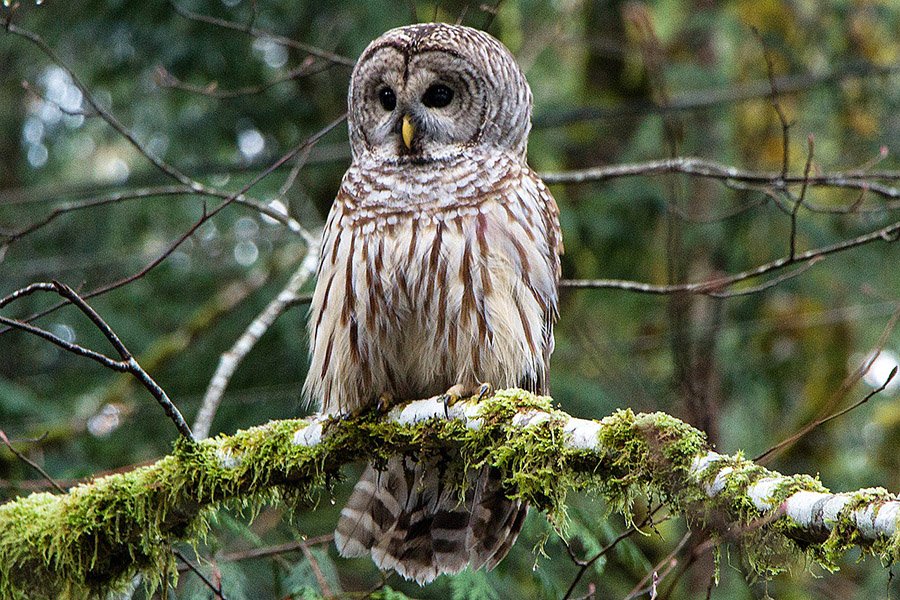
- Scientific Name: Strix varia
- Size: 40-63 cm (16-25 in)
- Weight: 500-1050 g (1.1-2.3 lb)
- Wingspan: 96-125 cm (38-49 in)
- Time of the Year: Year-round
Barred Owls, with their large, round heads, dark eyes, and characteristic barred plumage, are a common sight in the forests of Montana throughout the year. They inhabit mature forests, swamps, and woodlands, preferring areas near water bodies.
These owls are known for their distinct hooting call, which sounds like they are saying, “Who cooks for you? Who cooks for you-all?” This call can be heard across the quiet Montana forests, especially during the night as they are nocturnal creatures. Their diet consists mainly of small mammals, but they are known to prey on birds, amphibians, and even fish.
Barred Owls are more likely to be spotted than other species due to their preference for perch hunting. They sit and watch for prey, swooping down when they spot a meal. While these owls are relatively common, seeing one in the wild is still a treat for any nature lover.
Did you know? The Barred Owl has been known to live up to 24 years in the wild, which is quite a long lifespan for an owl!
Burrowing Owl
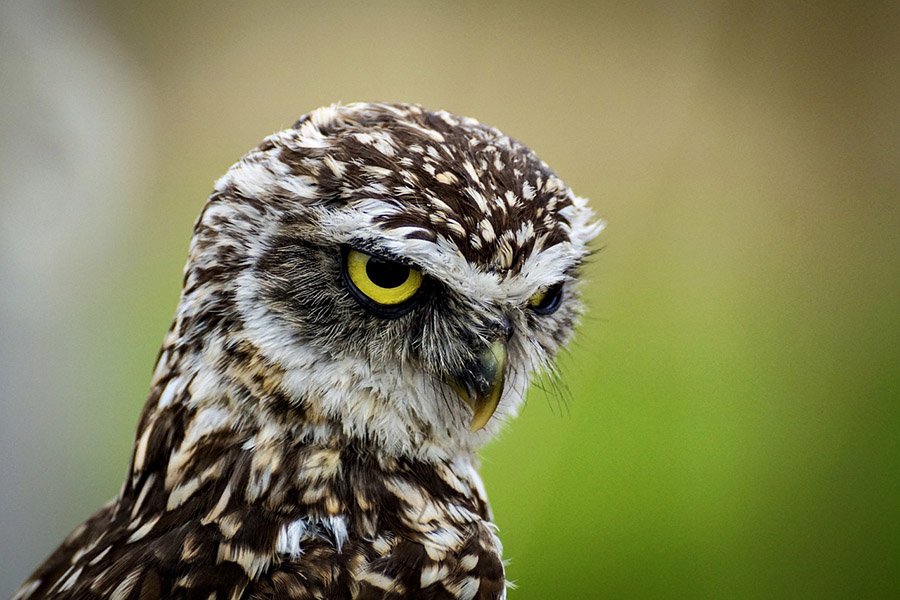
- Scientific Name: Athene cunicularia
- Size: 19-28 cm (7.5-11.0 in)
- Weight: 140-240 g (4.9-8.5 oz)
- Wingspan: 50.8-61 cm (20-24 in)
- Time of the Year: Late spring to early fall
The Burrowing Owl is a small, long-legged owl species found in the grasslands and open areas of Montana, usually from late spring to early fall. Unlike other owl species, the Burrowing Owl is active during the day, especially in the early morning and late afternoon.
These unique owls prefer to nest in burrows dug by prairie dogs, rabbits, or other burrowing animals, hence their name. They are opportunistic hunters, feeding on a variety of small creatures such as insects, rodents, amphibians, and small birds.
Spotting a Burrowing Owl requires a keen eye. Look for them perched near their burrows or on fence posts, scanning their surroundings for potential threats or prey. Their striking white eyebrows and bright yellow eyes make for a distinctive sight if you’re lucky enough to spot one.
Did you know? The Burrowing Owl is one of the few owl species that is active during the day. When threatened, they make a hissing noise that sounds like a rattlesnake to deter predators.
Eastern Screech Owl
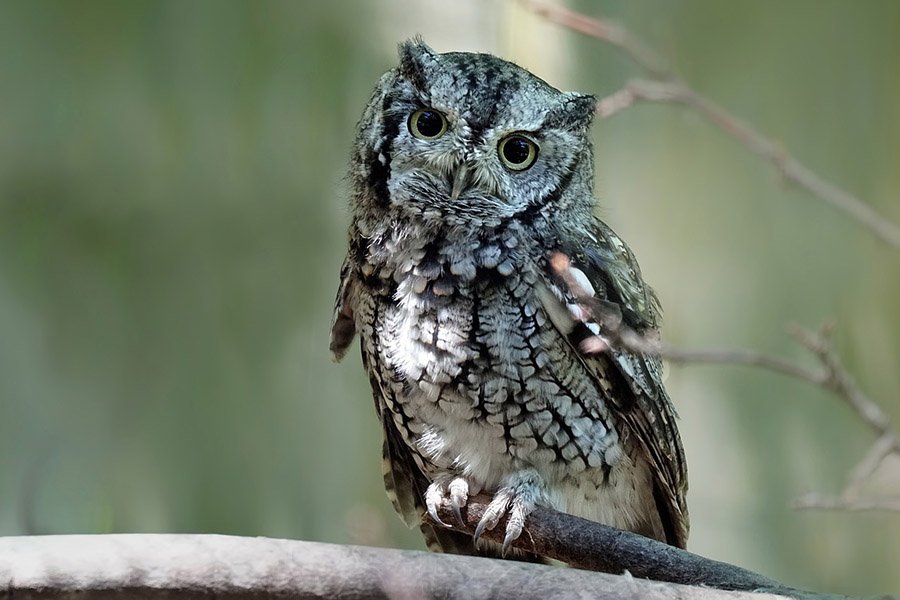
- Scientific Name: Megascops asio
- Size: 16-25 cm (6.3-9.8 in)
- Weight: 121-244 g (4.3-8.6 oz)
- Wingspan: 46-61 cm (18-24 in)
- Time of the Year: Year-round
Eastern Screech Owls are compact, robust owls that are residents in the wooded regions of Montana year-round. They have a preference for deciduous forests and woodland edges, often nesting in tree cavities or in the old nests of larger bird species.
Despite their name, the call of the Eastern Screech Owl is not actually a screech. Instead, it’s a series of whinnies and soft trills that echo through their forest homes at night. As nocturnal birds, they hunt for a diverse range of prey, including small mammals, insects, birds, and even crayfish.
Spotting these owls can be a challenge due to their cryptic plumage, which offers excellent camouflage against tree bark. However, their distinctive calls, especially during mating season, can offer a clue to their presence.
Did you know? Eastern Screech Owls come in two different color morphs, red and gray. This color variation doesn’t seem to be linked to their habitat, geographic location, age, or sex.
Western Screech Owl
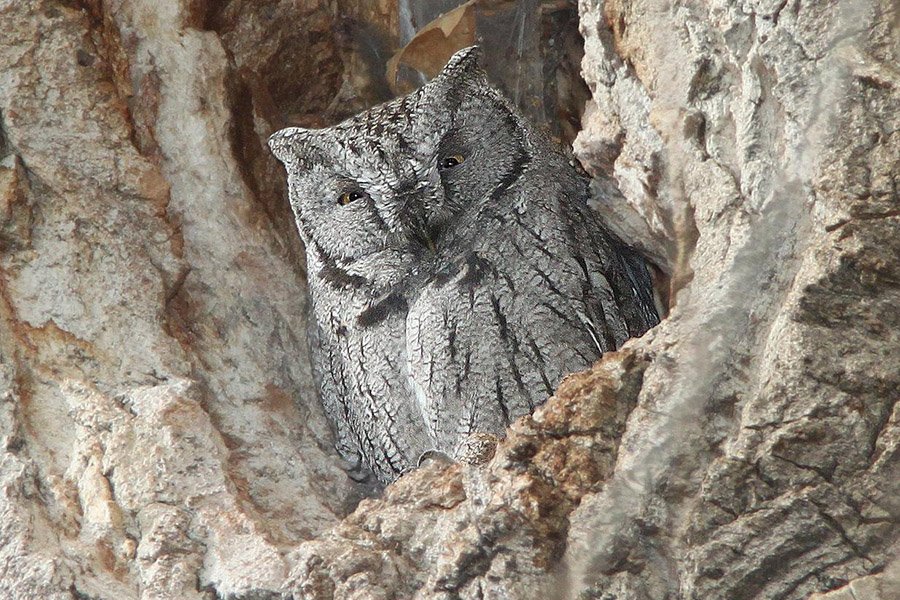
- Scientific Name: Megascops kennicottii
- Size: 22-24 cm (8.5-9.5 in)
- Weight: 141-244 g (5-8.6 oz)
- Wingspan: 54-61 cm (21-24 in)
- Time of the Year: Year-round
The Western Screech Owl, like its eastern cousin, is a small owl with excellent camouflage. It can be found year-round in Montana’s forests and woodlands, particularly in areas near water. They have rounded wings and a short tail, which often appears square-tipped. This owl’s voice is a series of low hoots, which are less tremulous than the hoots of Eastern Screech Owls.
Western Screech Owls have an opportunistic diet and eat a variety of small prey. Their diet consists mostly of mammals and large insects, but they also take small birds, reptiles, and amphibians.
Look for Western Screech Owls in the dense foliage of trees and shrubs, or listen for their calls at night, particularly during the breeding season in early spring.
Did you know? The Western Screech Owl’s camouflaged plumage allows it to rest near tree trunks during the day, making it nearly invisible to predators and birdwatchers alike.
Flammulated Owl
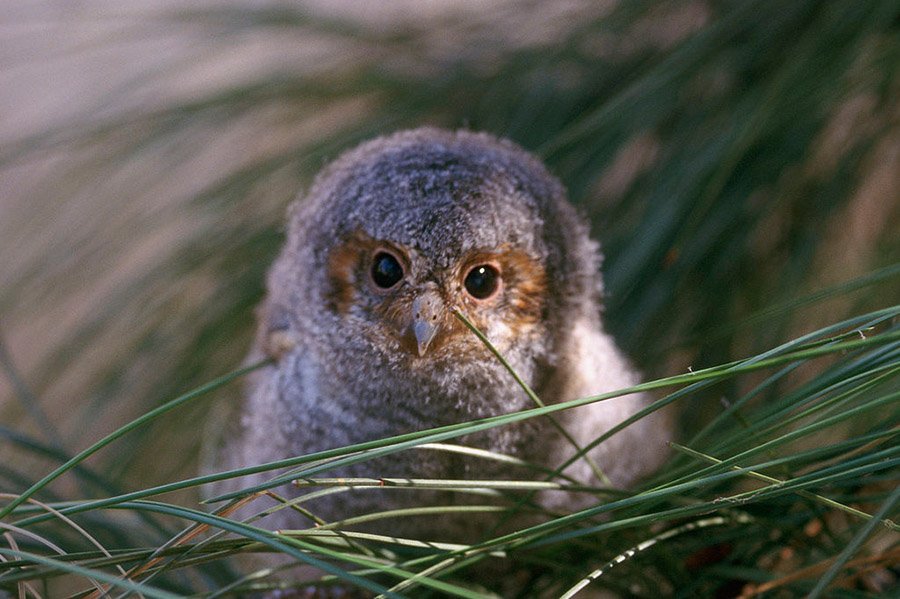
- Scientific Name: Psiloscops flammeolus
- Size: 15-17 cm (6-7 in)
- Weight: 45-65 g (1.6-2.3 oz)
- Wingspan: 36-42 cm (14-16.5 in)
- Time of the Year: Late spring to early fall
The Flammulated Owl is a small, nocturnal owl species that migrates to Montana for the breeding season. It is named for its flame-like markings and has a grayish, reddish, or dark brown color that blends well with the bark of mature pines and oaks, which are its preferred habitats.
These owls primarily feed on insects, making them an insectivore – quite unusual for an owl species. They often hunt from a perch, swooping down onto prey or flying up to pluck insects from leaves.
The best chance to spot this elusive bird is during dusk and dawn when they’re most active. Listen for their low-pitched, two-part hoots in the forest.
Did you know? The Flammulated Owl is one of the most migratory owl species. Every autumn, they travel all the way to Central America and return to North America to breed in the spring.
Great Gray Owl
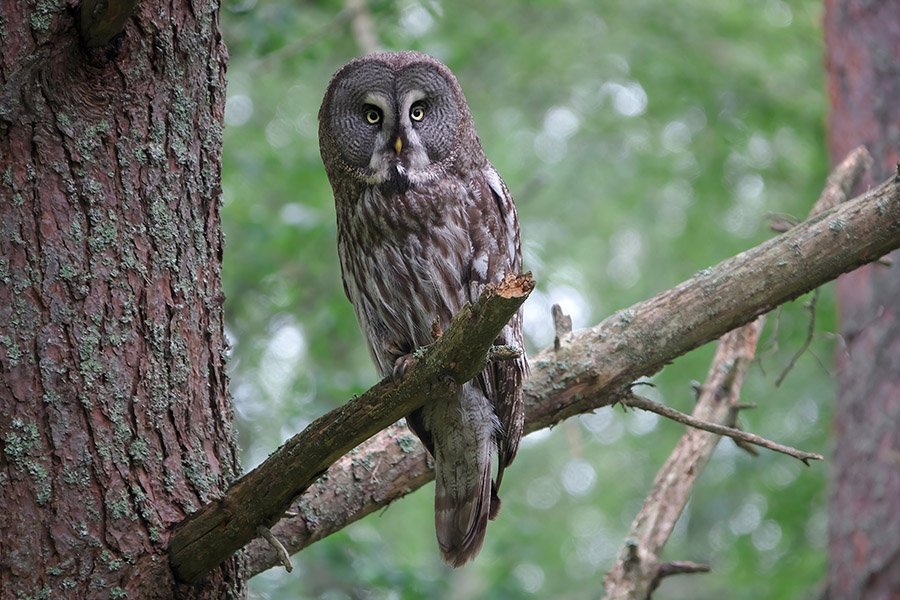
- Scientific Name: Strix nebulosa
- Size: 61-84 cm (24-33 in)
- Weight: 790-1450 g (1.7-3.2 lb)
- Wingspan: 142-152 cm (56-60 in)
- Time of the Year: Year-round
The Great Gray Owl, known as the “phantom of the north,” is the tallest owl found in America, and they can be observed in Montana throughout the year. Despite its impressive size, this owl weighs only about as much as a small duck, because much of its bulk is feathers. It is recognizable by its round head, a lack of ear tufts, and very large facial disks.
This species primarily inhabits dense coniferous forests, often in locations near open fields, meadows, or wetlands that provide hunting grounds. Great Gray Owls mainly eat small rodents and are known for their extraordinary hunting skills, being able to locate and snatch prey underneath two feet of snow!
Did you know? Great Gray Owls have the largest facial disks of any raptor. These disks act like parabolic reflectors, channeling sound into their ears and enabling them to pinpoint even the faintest sounds made by their prey.
Great Horned Owl
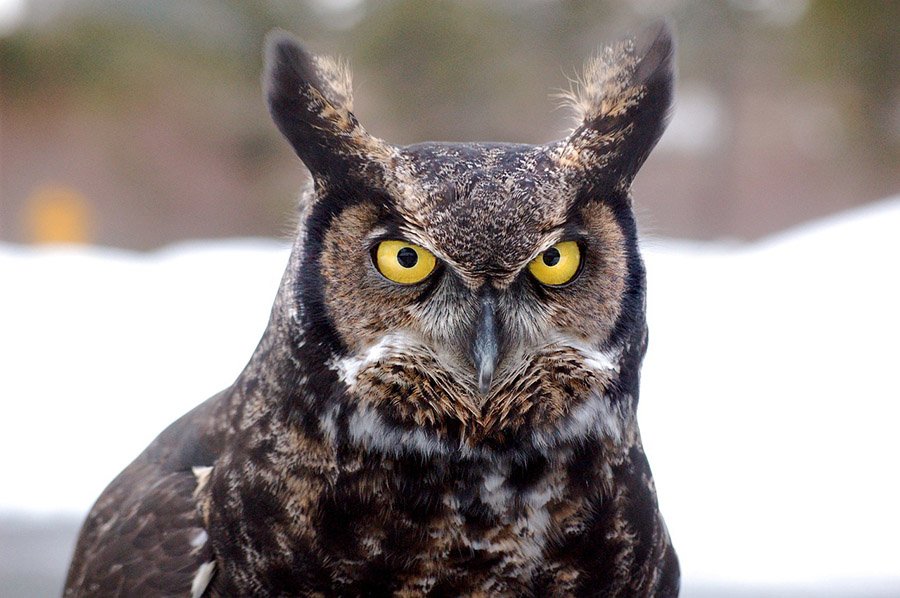
- Scientific Name: Bubo virginianus
- Size: 46-63 cm (18-25 in)
- Weight: 910-2500 g (2-5.5 lb)
- Wingspan: 101-145 cm (40-57 in)
- Time of the Year: Year-round
The Great Horned Owl is an adaptable bird and one of the most common owls in North America. Found year-round in Montana, these majestic creatures are known for their large size, feathered “horns” (which are actually tufts of feathers), and deep, hooting voice.
Great Horned Owls are capable of living in a variety of habitats, from dense forests to city parks. They are also known to be excellent hunters, with a diet that includes a wide range of creatures – pretty much anything they can catch, including other owls!
Did you know? The eyes of Great Horned Owls are nearly as large as those of humans but are not nearly as versatile. They can’t move their eyes in their sockets, so they have to turn their entire head to look in different directions. This is why they can rotate their necks 270 degrees!
Short-Eared Owl
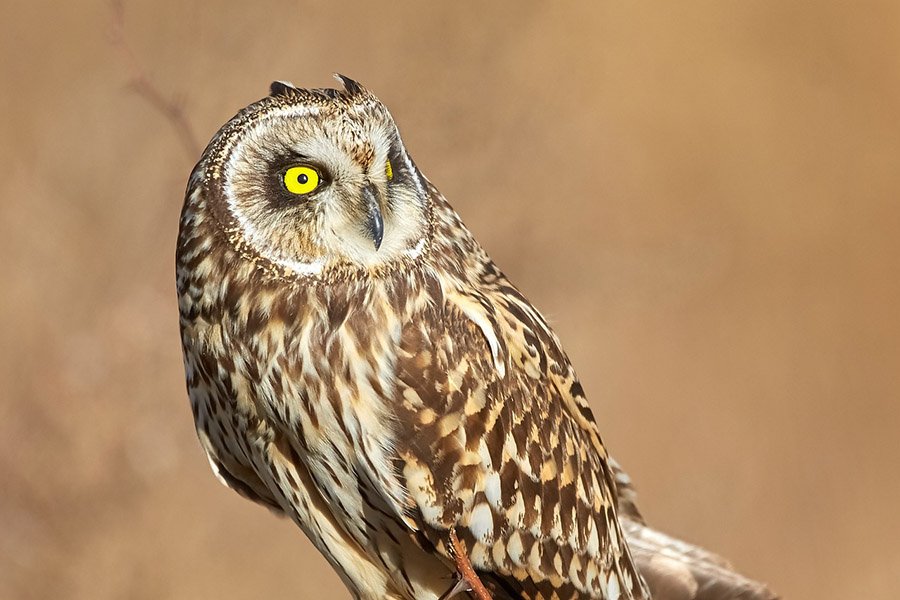
- Scientific Name: Asio flammeus
- Size: 34-43 cm (13-17 in)
- Weight: 206-475 g (0.45-1.05 lb)
- Wingspan: 85-110 cm (33.5-43.3 in)
- Time of the Year: Year-round
Short-Eared Owls, despite their name, actually have long ears. However, these are often flattened against the bird’s head, giving the appearance of being short. This species is one of the few owls that can be seen actively hunting during the daytime, especially at dawn and dusk. Its flight is distinctive, characterized by buoyant, moth-like wing beats.
These owls are one of the most widespread owls globally, found on all continents except Antarctica. In Montana, they can be observed year-round, especially in open areas such as grasslands, marshes, and agricultural fields. These environments provide them with an ample supply of their preferred prey: small mammals.
Did you know? Unlike many other owl species, Short-Eared Owls often nest on the ground, making a small scrape in the earth or grass to lay their eggs.
Long-Eared Owl
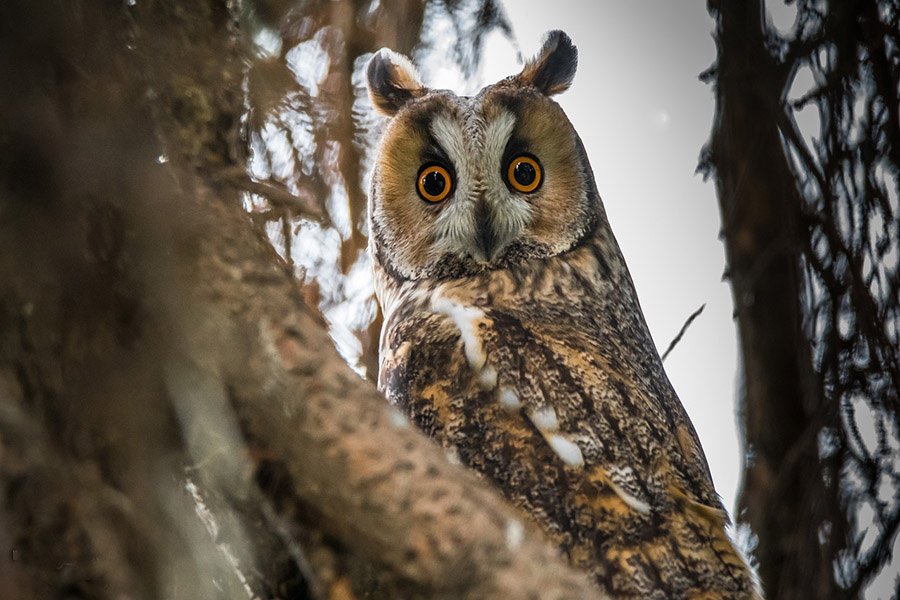
- Scientific Name: Asio otus
- Size: 31-40 cm (12-16 in)
- Weight: 178-435 g (0.4-0.96 lb)
- Wingspan: 90-100 cm (35-39 in)
- Time of the Year: Year-round
The Long-Eared Owl, named for its distinctive ear tufts that appear to be long “ears,” is another species that can be found throughout the year in Montana. These medium-sized owls are more often heard than seen due to their secretive nature. They’re best known for their deep hoots that echo through the night.
Long-Eared Owls prefer dense forests for roosting during the day and open lands for hunting at night, making Montana’s varied landscapes a perfect home. Their diet consists mainly of small mammals, but they’re also known to eat birds.
Did you know? Long-Eared Owls are excellent at camouflage. When disturbed, they stretch their bodies and tighten their feathers, mimicking a branch or tree trunk to hide from potential threats.
Northern Hawk Owl
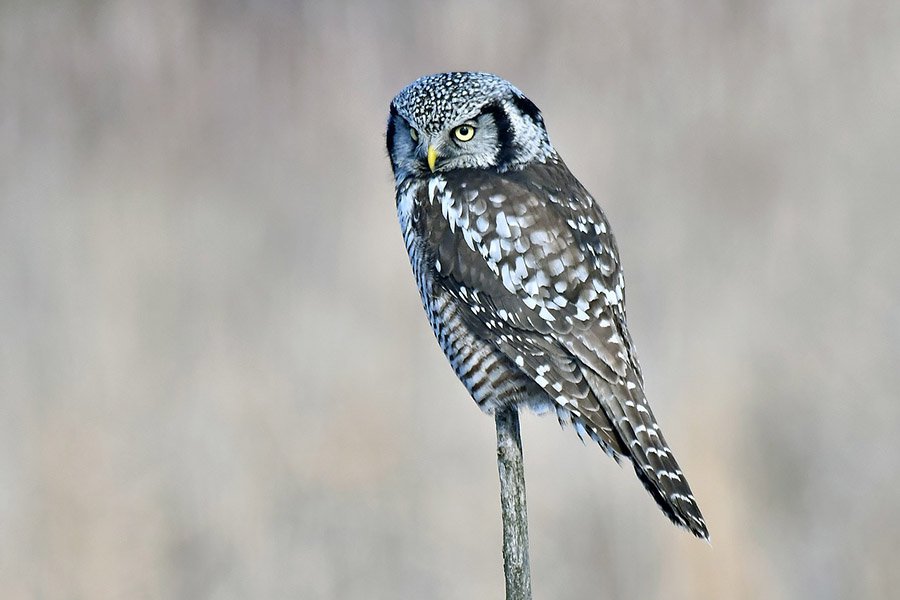
- Scientific Name: Surnia ulula
- Size: 36-42.5 cm (14.2-16.7 in)
- Weight: 300-400 g (0.66-0.88 lb)
- Wingspan: 69-81 cm (27.2-31.9 in)
- Time of the Year: Year-round
Northern Hawk Owls, as their name implies, possess characteristics of both hawks and owls, making them a unique species. Their long tails and habit of perching in the open resemble those of a hawk, while their facial discs and night-hunting habits are typical owl traits. This species is most active during the day, unlike most owls.
They’re most often found in the boreal forests of the northern hemisphere, but Montana’s northern regions can occasionally see this owl. They’re exceptional hunters and can detect prey under two feet of snow from nearly half a mile away.
Did you know? Northern Hawk Owls are one of the few owl species not affected by the “deceitful” tactics of smaller birds. They remain indifferent to mobbing, which often forces other owl species to reveal their location.
Northern Pygmy-Owl
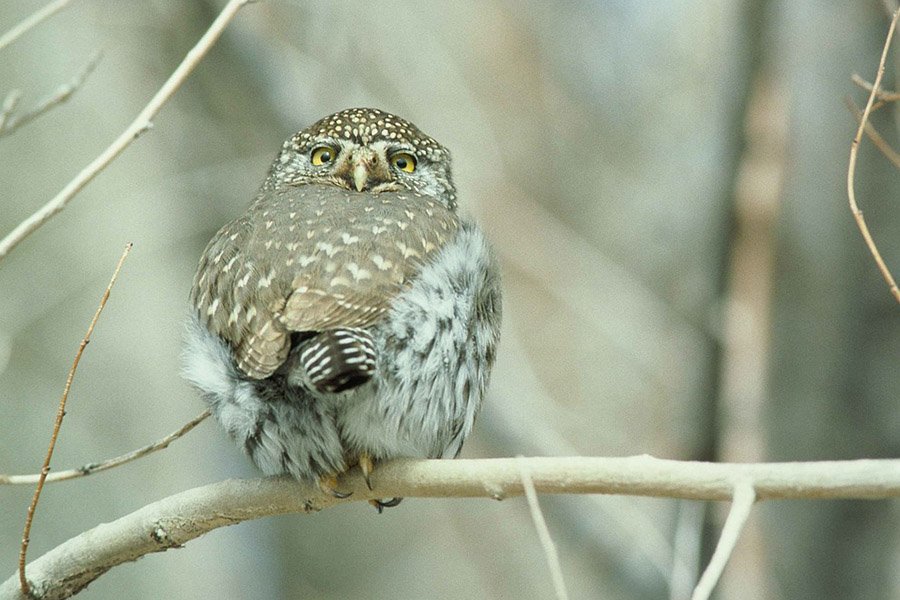
- Scientific Name: Glaucidium gnoma
- Size: 16-18 cm (6.3-7.1 in)
- Weight: 60-71 g (2.1-2.5 oz)
- Wingspan: 38 cm (15 in)
- Time of the Year: Year-round
One of the smallest owl species, the Northern Pygmy-Owl, is native to Montana. Don’t be fooled by their size; these little predators are fierce hunters and will take on prey larger than themselves, including other birds and small mammals. They can be active at any time of the day but tend to hunt most actively at dawn and dusk.
In Montana, they are most commonly seen in mountainous forests and mixed woodlands. The Northern Pygmy-Owl is identifiable by its round head, lack of ear tufts, and false “eyes” on the back of its head, thought to confuse predators.
Did you know? Despite their small size, Northern Pygmy-Owls are quite brave. They have been known to attack humans who venture too close to their nests during the breeding season.
Northern Saw-Whet Owl

- Scientific Name: Aegolius acadicus
- Size: 18-20 cm (7.1-7.9 in)
- Weight: 75-110 g (2.6-3.9 oz)
- Wingspan: 42-56.3 cm (16.5-22.2 in)
- Time of the Year: Year-round
Named for its distinctive, high-pitched call that resembles a saw being sharpened, the Northern Saw-Whet Owl is a captivating presence in the Montana landscape.
These small owls, with their big, yellow eyes and adorable countenance, prefer dense thickets and coniferous forests. Despite their small size, these owls are fearsome hunters, primarily feasting on small rodents.
Northern Saw-Whet Owls are primarily nocturnal, hunting at night and remaining hidden in dense foliage during the day. Despite their elusive nature, they’re relatively common, but their excellent camouflage often keeps them hidden from sight.
Did you know? Northern Saw-Whet Owls can often be found reusing the old nests of other bird species, such as the American Robin, rather than building their own.
Snowy Owl
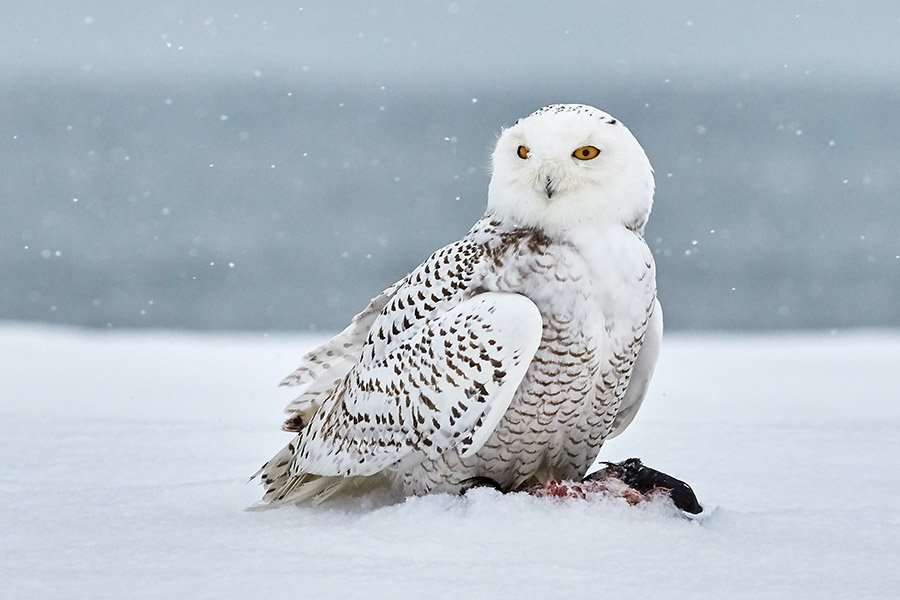
- Scientific Name: Bubo scandiacus
- Size: 52-71 cm (20.5-28 in)
- Weight: 1.6-3 kg (3.5-6.6 lb)
- Wingspan: 125-150 cm (49-59 in)
- Time of the Year: Winter
Known for their striking white plumage, the Snowy Owls are winter visitors to Montana. They’re typically residents of the Arctic tundra, migrating south during harsh winters.
These powerful owls are among the heaviest in North America. Unlike most owl species, they are diurnal and can often be spotted during daylight hours.
The open landscapes of Montana, reminiscent of their tundra home, provide perfect hunting grounds for these owls. Snowy Owls mainly prey on small mammals, and their diet can include large numbers of lemmings.
Did you know? The Snowy Owl was made famous by the “Harry Potter” series of books and movies, in which Harry’s pet owl, Hedwig, is a Snowy Owl. This has increased their popularity and recognition worldwide.
Where & How to Observe Owls in Montana
Montana’s diverse landscape and wide-open spaces make it a haven for many owl species. Here are some places and habitats where you might be fortunate to spot these incredible birds:
- Flathead National Forest: This vast wilderness is a great place to look for Great Gray Owls and Northern Hawk Owls.
- Glacier National Park: The park’s old-growth forests provide suitable habitat for a variety of owl species, including the Northern Pygmy Owl and the Great Horned Owl.
- Bitterroot Valley: This region is known for its healthy Barn Owl population.
- Helena-Lewis and Clark National Forest: Here, the mixed coniferous forests provide a suitable home for several owl species including the Western Screech Owl and the Northern Saw-Whet Owl.
- Charles M. Russell National Wildlife Refuge: In this refuge, you might be able to spot the Burrowing Owl in the warmer months.
Owls in Montana can be found in a variety of habitats, from dense forests to open prairies and even suburban areas. For example, Great Horned Owls and Eastern Screech Owls are known to inhabit urban areas and nest in human-made structures. In contrast, species such as the Great Gray Owl and the Northern Hawk Owl are more likely to be found in remote, forested areas.
Quick Tips For Owl Spotting
- Timing: Many owls are nocturnal, so dusk and dawn are the best times to spot them.
- Quietness: Owls have acute hearing, so try to minimize noise when you’re searching for them.
- Look Up: Owls are often perched high up in trees or on poles.
- Spotting Scope: A good spotting scope or binoculars can be helpful in seeing owls from a distance.
- Respect Their Space: Don’t approach too closely, especially near nesting sites, as this could disturb the owls.
- Join a Guided Tour: Experienced local guides will know the best spots and times to see owls in your area.
- Patience: Spotting owls can sometimes take time and patience, so don’t get discouraged if you don’t see one immediately.
Happy owl-spotting in Montana!
Owls in Other States
- Alabama
- Alaska
- Arizona
- Arkansas
- California
- Colorado
- Connecticut
- Delaware
- Florida
- Georgia
- Hawaii
- Idaho
- Illinois
- Indiana
- Iowa
- Kansas
- Kentucky
- Louisiana
- Maine
- Maryland
- Massachusetts
- Michigan
- Minnesota
- Mississippi
- Missouri
- Montana
- Nebraska
- Nevada
- New Hampshire
- New Jersey
- New Mexico
- New York
- North Carolina
- North Dakota
- Ohio
- Oklahoma
- Oregon
- Pennsylvania
- Rhode Island
- South Carolina
- South Dakota
- Tennessee
- Texas
- Utah
- Vermont
- Virginia
- Washington
- West Virginia
- Wisconsin
- Wyoming
